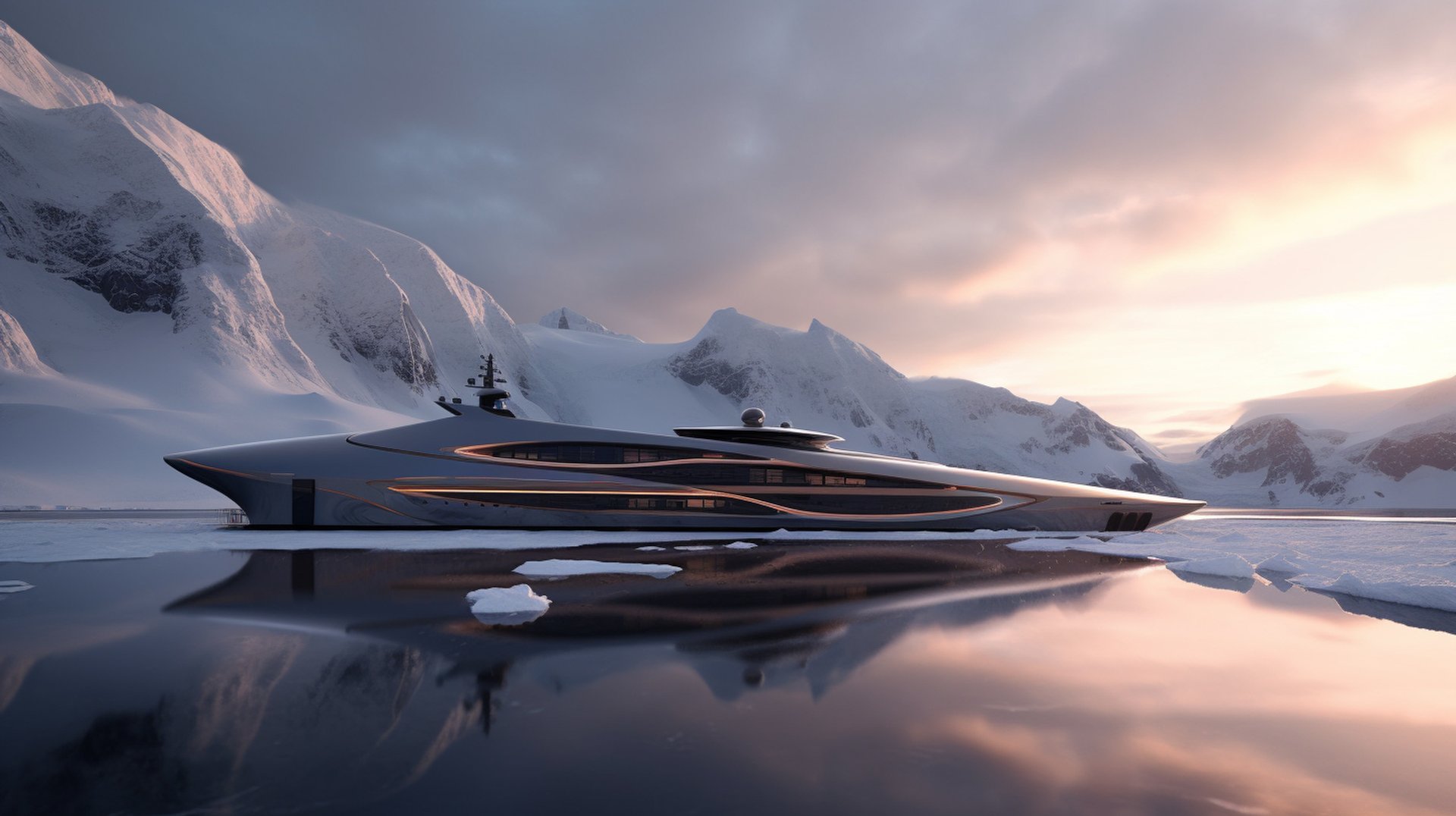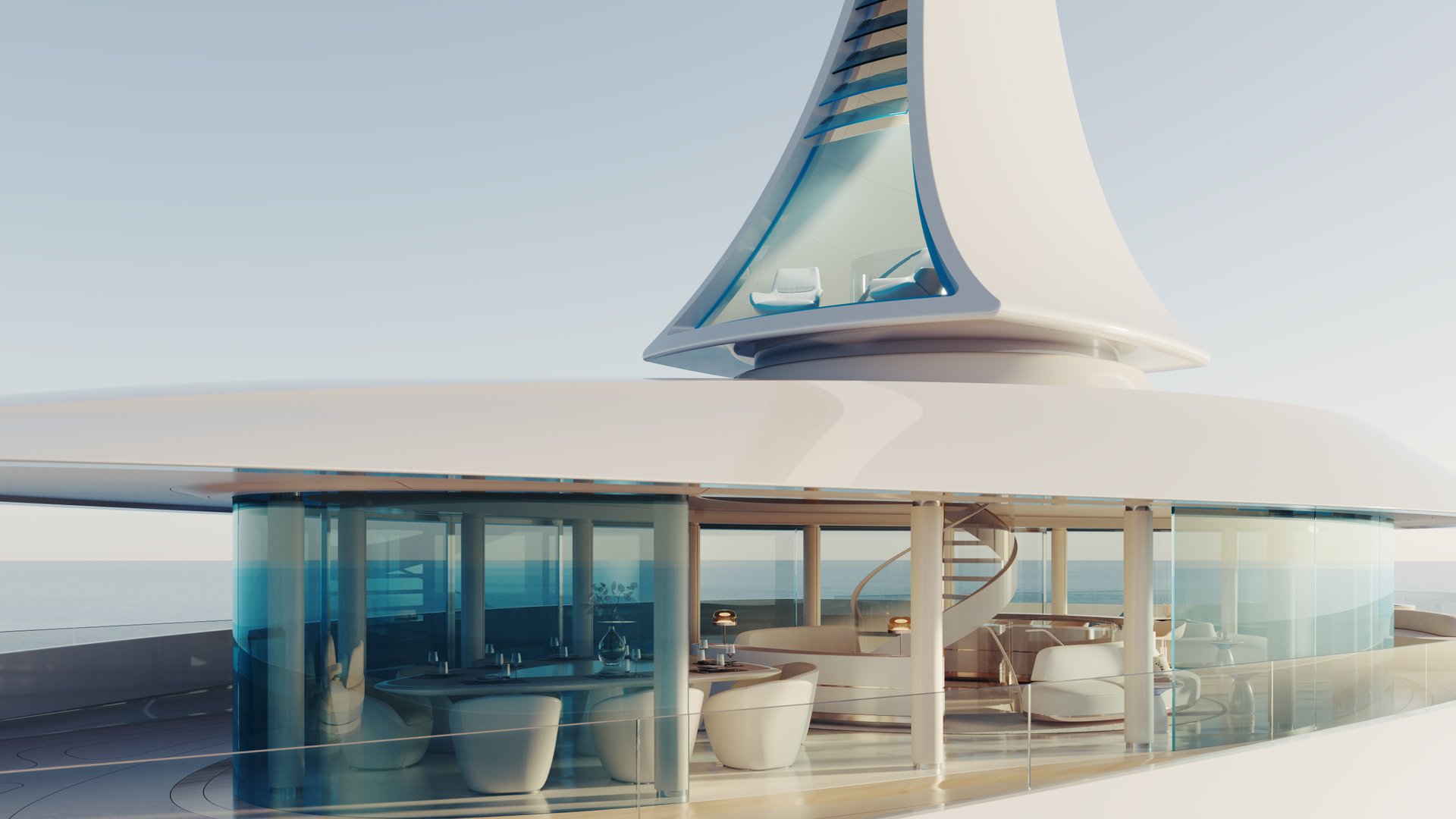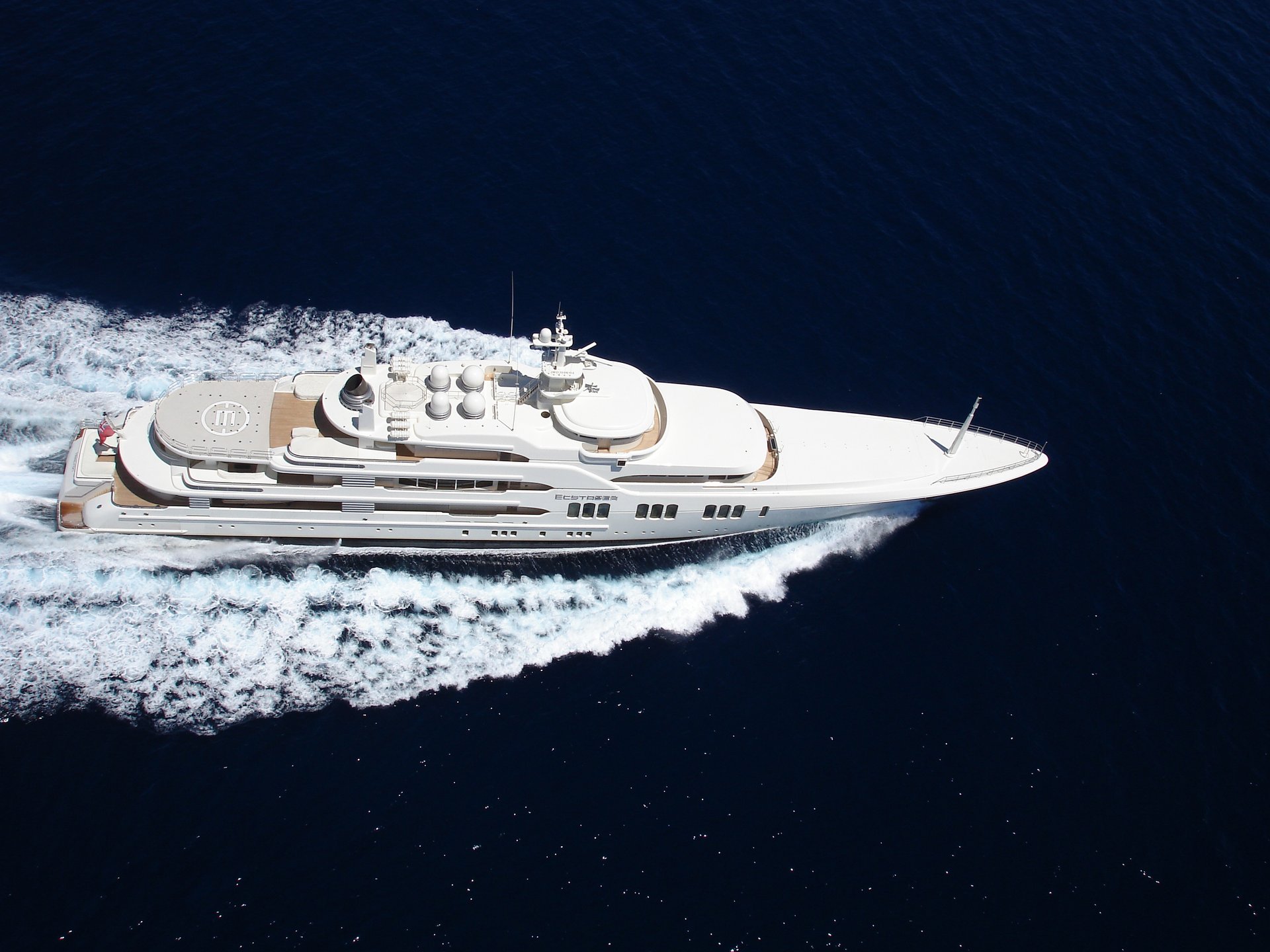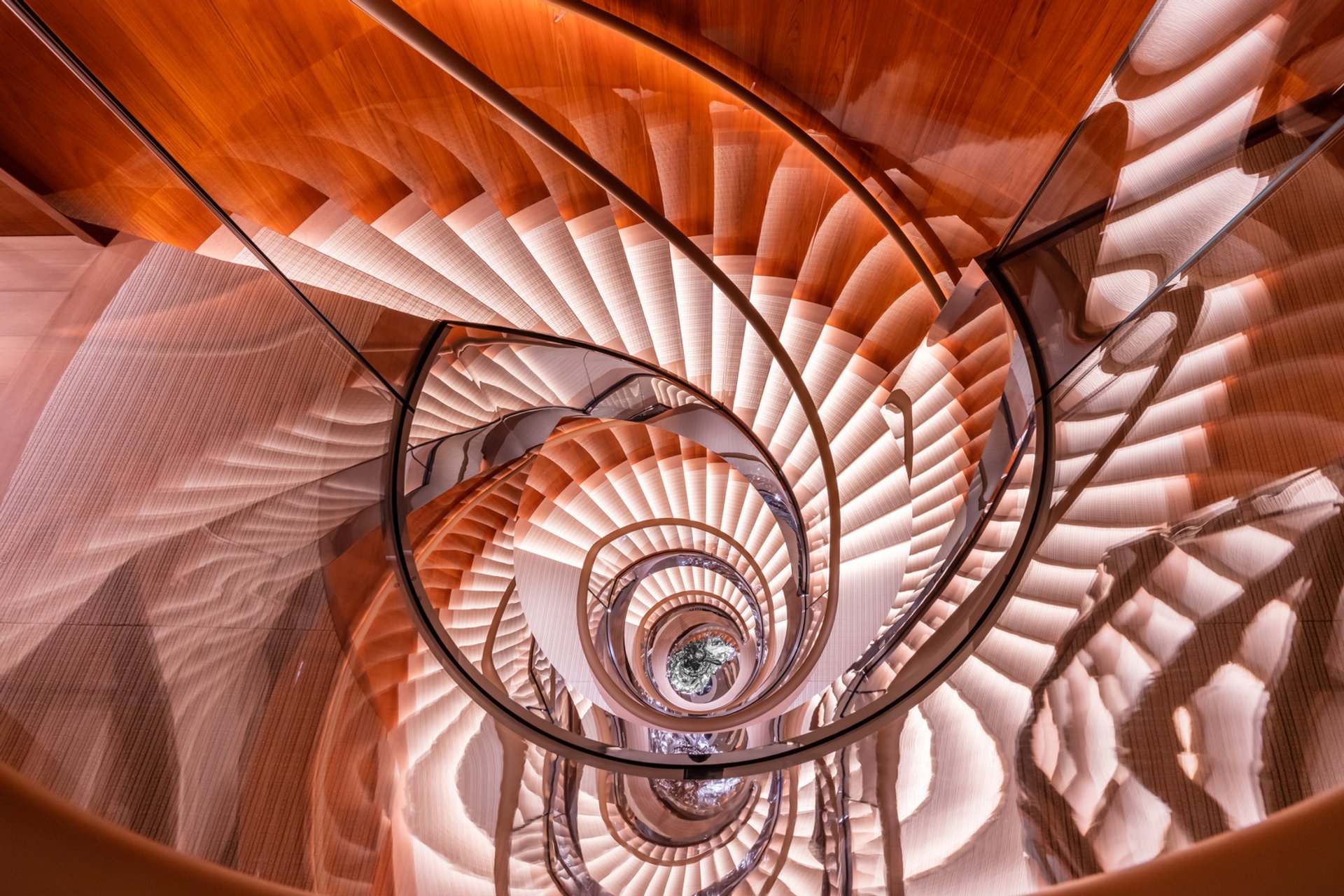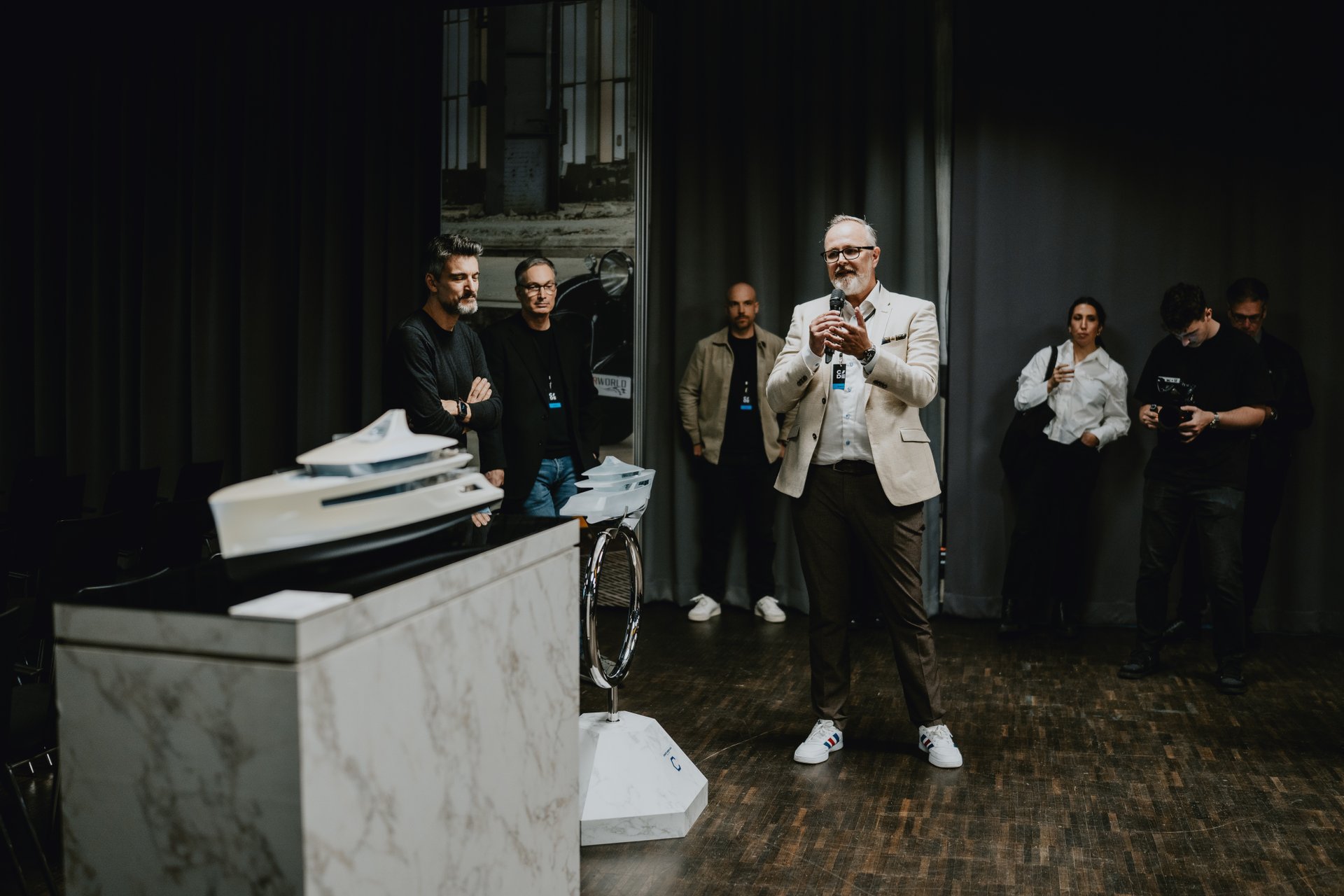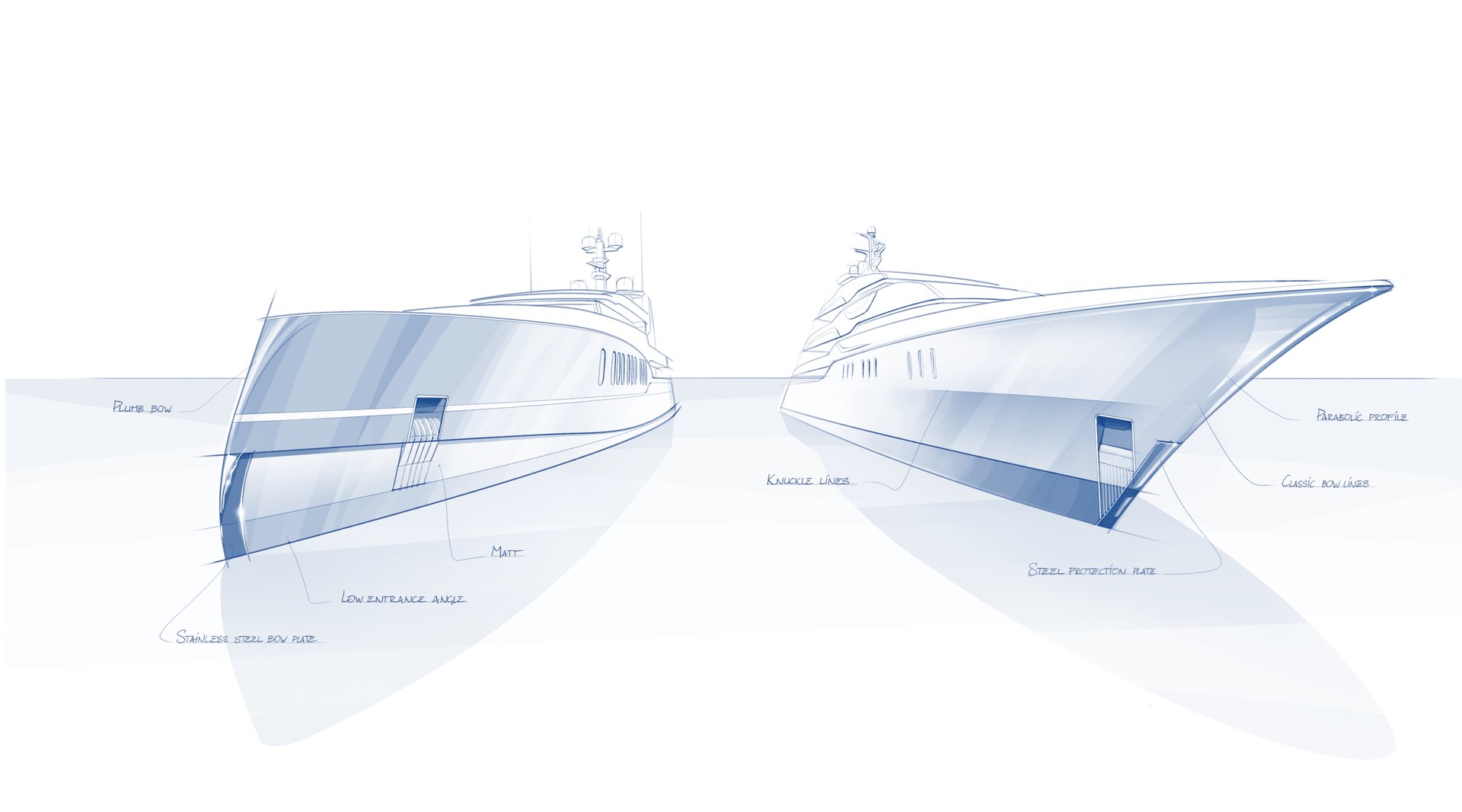Artificial Intelligence (AI) is the talk of the town. Everyone from scientists to high school students, personal shoppers to beer brewers are using generative AI tools and large language models like ChatGPT, Rytr, Jasper and copy.ai to save time, boost performance, play around and – in the case of those students – plagiarize. Naturally, PILOT was interested in how AI is affecting and influencing the yachtbuilding industry. So we asked long-time yachting journalist Marilyn Mower to give a generative AI tool a spin and document her explorations into the world of AI yacht design. Feadship, of course, has been using artificial intelligence for years to crunch huge reams of data from naval architecture studies as well as input from sensors aboard existing Feadships. “What I was most interested in is seeing how a design studio like Studio De Voogt is applying AI to designing yachts,” she says. Across the following pages we reveal the prompts she used, the conversations she had and the yacht she ultimately designed using the AI writing assistant Rytr.
The Rytr Stuff: Applying AI to Yacht Design
Every internet giant seems to be jumping on board image generation. Some focus on fine art impersonation – ask for a still life of a derelict red barn in a field with black and white cows at dawn in the style of Sargent, for example. These are examples of what is called general AI and it suits for inspiration and some visual research. But more complex programs with more expensive user time in the hands of a skilled operator can generate images that go far beyond fun and games. The more creative the input, the more interesting the outcome. “What I miss with these models is that I can’t hear myself talking in the text,” says Studio De Voogt’s Head of Design, Tanno Weeda. “You need to drive it. It is completely devoid of tone and personality.”
In the world of superyacht design, where every detail matters, AI is making its mark. From the intricate interior design to the sleek lines of the exterior, AI technology is revolutionizing the way designers create beautiful luxury yachts of 50-metre or more.
AI plays a crucial role in assisting yacht designers throughout the creative process. By harnessing advanced algorithms and machine learning capabilities, AI helps designers generate innovative concepts and streamline their workflow. One prominent player in this field is Feadship, a renowned Dutch shipyard that has embraced AI technology to enhance their design capabilities.
With AI, yacht designers can leverage vast databases of previous designs and industry trends to gain inspiration and insights. This allows them to explore new possibilities and push boundaries in their creations. Additionally, AI algorithms can analyse customer preferences and feedback to provide personalized recommendations for interior layouts, materials, colours and more.
Moreover, AI assists in optimizing various aspects of superyacht design. It can simulate fluid dynamics to enhance hull performance and fuel efficiency while ensuring a smooth sailing experience. Furthermore, AI-powered tools enable designers to visualize their ideas in virtual environments before construction begins.
While human creativity remains irreplaceable in superyacht design, AI serves as a valuable tool that complements and enhances the skills of designers. By embracing this technology, yacht designers can unlock new levels of innovation and efficiency in creating breath-taking vessels that redefine luxury on the high seas.
I did not write that, not a word of it. It was written by a machine. A Large Language Model AI machine called Rytr. It is, more specifically, Rytr’s second draft after I added the keywords, “Feadship” and “knowledgeable audience” to my prompt to create an article about using AI in yacht design. It took the bot less than two minutes to write, significantly less than it would have taken a human just to type it. I had been reading general articles about AI for weeks – sourced for me by Google Alerts, which is a kind of narrow AI function itself, not unlike Siri on an iPhone. So the task was to find a connection between yacht design and AI. Huge topics need to be managed by just reaching in and grabbing a handful on information as a starting point. Instead, with a bit of cheekiness, I decided AI could just explain itself.
I had a video interview scheduled with Studio De Voogt’s Head of Design, Tanno Weeda, to discover the studio’s use of AI. As we began, I asked him to open an email I had just sent – a short article on the Use of AI in yacht design. Then I told him a machine wrote it. The look on his face, eyes open wide, was priceless.
“That’s exactly what we are doing,” he exclaimed. We wondered aloud if the Studio was bugged. “Well, I guess you don’t need me. You have your article.”
“Not so fast,” I said. “Rytr just combs existing data and uses algorithms to make what we might call an educated guess. I want the inside story.”
“At this point we are using AI for inspiration and research,” says Weeda. “Even with the best prompts and the most sophisticated design programs, AI does not get proportions right and it always makes mistakes on the window heights of the lower deck, crew portholes, anchor pockets and the placement of freeing ports. It doesn’t understand structural elements or thickness of materials. If it creates an interesting concept, then a designer has to step in and use real drawing tools, and an engineer must use calculations to make it workable,” Weeda said. “You can’t see behind the bulwark in AI.”
The editor of PILOT knows that I am not a fan of so-called ‘futuristic designs’ that look like they are created in the animation lab for a sci-fi/fantasy video game. The laws of hydro- and aerodynamics don’t change no matter how good an artist is using Photoshop. A yacht is a machine that has to go to sea and stay afloat in the kind of weather and sea state that doesn’t make for romantic renderings.
“You have to know how AI works,” says Weeda. “If you don’t know, then you can’t guide it. As far as inspiration goes, AI connects the dots in much the same way as the human mind, but much faster and without distraction. It learns quickly, but it only knows what it has already seen, for now...”
Weeda tells me that Studio De Voogt began looking at AI when one of its designers began playing around with an AI program. “We said, ‘Hey, looks like fun!” he says. The Studio began to get serious about it as a tool about a year ago with an Open AI Beta program from ChatGPT. The program is now called DALL-E and is perhaps one of the simplest to grasp. Because it uses the large language algorithms of ChatGPT for its image generator, the prompts are fairly deep and specific. Another AI image generator that appears more robust and to have a more visual underpinning is Midjourney.
“What we do is custom design,” adds Weeda. “The best design is when our clients recognize themselves in the design, which is totally unique. All AI can assemble is something from parts already seen. Maybe AI will free us up a bit to do things we really want to do. The asset of a designer is not that he can draw, but that he can visualize. We already have very good visualizers on our team. If AI ever learns to visualize, then I can finally go paint in the forest,” he said with a smile.
As the noted American graphic designer Milton Glaser said, "A computer is to design as a microwave is to cooking.”
Feadship AI Design Competition: Original, Buildable, Scary
In May 2023, Feadship’s marketing department issued a call on Instagram for yacht designs created using artificial intelligence. The contest required them to create one picture of the exterior of their yacht and one interior space, but for the rest there were no rules and restrictions. Entries would be rated on story, the information the designers fed into the generator, the resulting design and how they refined their final submissions. “That last point was important because the process shapes the outcome”, said Tanno Weeda, Head of Design at Studio De Voogt.
In total, 23 aspiring yachtbuilders submitted designs. Weeda and four colleagues were then tasked with evaluating them. “We didn’t all agree,” he says. “We were looking for something innovative but also something we could actually build – although we probably wouldn’t. One looked like a cruise ship, another was a 70-metre with seven decks – it had a lot of windows but the people on board would have been tiny. In others, the interior design had no relationship to the exterior – that was generally a problem.”
Tanno admits that a few of the entries received a universal “no” right out of the block, but almost all elicited some sort of debate. For example, the designs submitted by Vincent Mann were deemed very original but not functional. Another, by Alexsei Suvorov, received points for consistent design language, while a yacht called Arizona by Lenny Fincke had an elaborate story and input but was considered “scary”. A few entries made a real effort to refine AI mistakes in proportion; the entry by Christopher Lane managed to put the anchor pockets in the right place. Many designs were clearly derivative, as if part of the input was a photo of an existing yacht.
Three different people from Studio Indigo, a design studio from the UK, sent in submissions. “They knew what they were doing,” notes Weeda. “We also liked Tron for its innovation, consistency and clearness of input description.”
After much deliberation and debate, Weeda and his colleges compared their scores and agreed on three top finishers, although there was not enough accord to actually rank them. Chris Lane’s design was a very buildable design; Mike Fisher’s took top marks in originality and realistic nature of the interior and Wiebe Terpstra’s Tron scored highly because the design so clearly matched the description given to the machine.
“For us it was a very good exercise,” says Weeda. “For some it changed the way we look at AI and for others it sharpened our opinions of good design.”
Pure Custom Creation: Man vs. Machine
Back at the 2017 Monaco Yacht Show, Feadship offered me a one-on-one session with a Studio De Voogt designer to experience pure customer creation. It was just me, Tanno Weeda and his sketch pad. Recently, I decided to relive the experience, not with Tanno but with DALL-E, an AI image generator. Here are the results.
Man
During my conversation with Tanno, I decided that I wanted a yacht no bigger than 50 metres in length with a style that was contemporary but not ultra-modern. I didn’t want anything swoopy, definitely no unnecessary curves or angles. And I wanted my owner’s suit on the main deck forward with big windows. As with most designers I know, Tanno began by drawing three straight lines. I was afraid I wasn’t giving him much of a challenge, so I quickly added, "Strong, high bow.”
More lines were made on the page. I saw the bow emerge. What about the sun deck or outdoor space, he asked. "Mmm, the sun and I don’t really get along. I like shade but other people might like to be in the sun, so not everything covered.”
He next went for the proportion and the placement of the mast. Studio De Voogt has a characteristic mast location in relation to the length forward. I could see it emerge. Together we decided on sloped bridge widows for a sleek line. As he was visualizing, he added some shading and the yacht began to find dimension and volume.
Warming to the task, I requested a big swim platform off of a beach club with opening sides open for views and breeze at anchor. A request for walkaround decks saw dimensions of deck overhangs emerge. "Not too boxy,” I cautioned.
A few more lines hinted at a Portuguese bridge. How did he know I like those?
He asked if I had a name in mind: Emma. Tanno made a few more lines, but the perfect sheer line was being elusive. Another ‘client’ had arrived for his ideal Feadship so we said our goodbyes and he promised to send the finished drawing.
That fall, thousands of miles and ideas later, an email arrived from Studio De Voogt. "Sorry for the delay… Attached please find…"
I couldn’t click the pdf fast enough. There was my Emma. Absolutely perfect and absolutely unique. My eyes rested on the broken sheer line… a subtle nod to an American styling cue from the previous century updated brilliantly by a Dutchman for the next one. This is what comes when one human being draws a yacht especially for another. In this case I am in that oh-so-exclusive club of people who have had a Feadship designed for them.
Machine
Never one to back away from a challenge, I decided to attempt using AI to draw a Feadship. First, I looked up programs to access AI, the result was daunting. Some were expensive to access, some were so complex they needed college-level understanding, some were cartoonish and silly. My Goldilocks moment came with finding DALL-E, a sister program to ChatGPT. A $15 investment promised enough ‘credits’ for what I thought would be a walk in the park. It was more like a four-hour descent into a rabbit hole and I was Alice in an amazing wonderland, stumbling on control techniques as I went.
My first attempts were ridiculous but improving as I learned how to arrange my prompts – DALL-E wanted me to use feet rather than metres, knew certain styles but not others – Frits de Voogt was not in the repertoire – and tried valiantly to understand what I meant by opening terraces.
Try as I might, I could not manage a line drawing of the profile in the style of Tanno Weeda. DALL-E has that annoying Millennial trait of wanting to see everything rendered in 3D like Photoshop – no imagination required.
A few days later I returned to the computer armed with new ideas for prompts and down the rabbit hole I went. Each series of prompts results in multiple variation choices, which themselves can be edited, it was the Madhatter’s tea party of designs.
When I showed my AI yachts to Tanno, he pulled one from the pile saying it looked most like a Feadship and then preceded to tell me what was wrong with it: “Proportionally, as far as I'm concerned, it comes closest to ‘Feadship’ design. You can indeed see quite a few imperfections, but at first glance quite nice. The more you zoom in, however, the worse it gets. Upperdeck front runs very crazy, and the topdeck dodger does the same. The distribution of decks is very strange and quite difficult to get ‘floating’. Are those portholes or empty ports?”
Clearly, humans are still in the lead.
